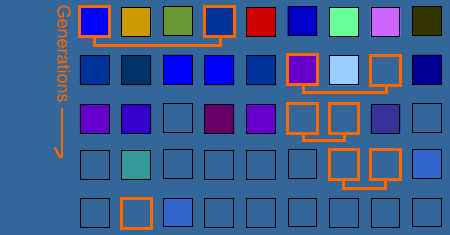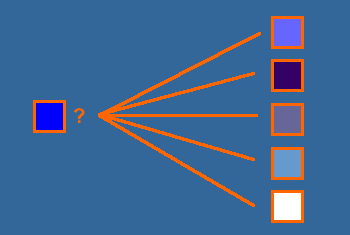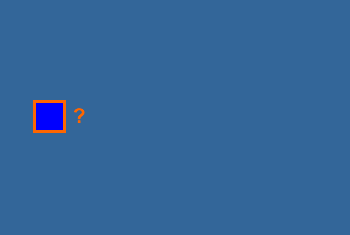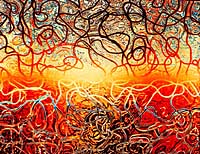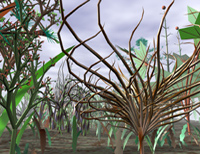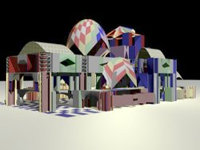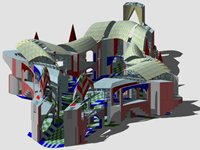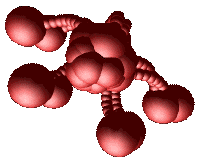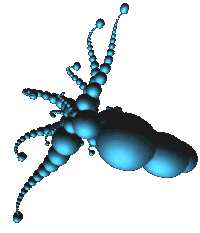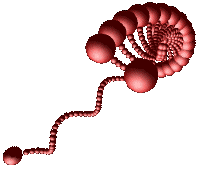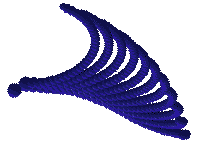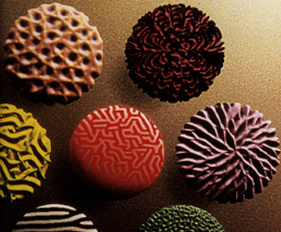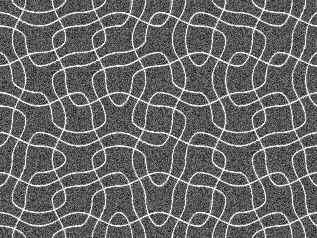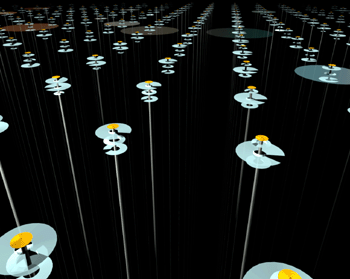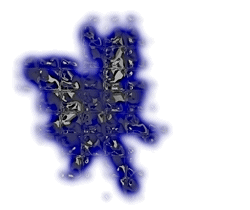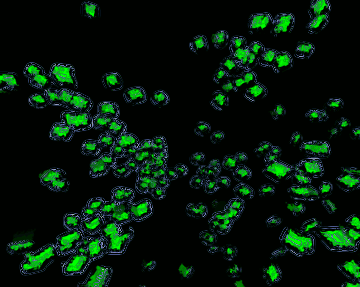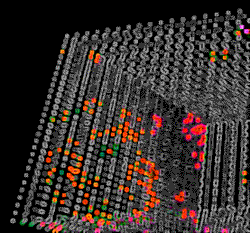European
Conference on Artificial Life, Prague, September 2001
Aesthetic
Fitness and Artificial Evolution for the Selection of Imagery from...
| |
The
Mythical, Infinite Library
|
|
Alan
Dorin
http://www.cs.monash.edu.au/~aland
aland@cs.monash.edu.au |
| |
Centre
for Electronic Media Art
School of Computer Science & Software Engineering
Monash University, Melbourne, Australia |
It is optimistic to expect consensus on a proposal: "This is Art"
or "This is not Art"
...when consensus on the question "What is Art?" is elusive.
Even without consensus on this latter point...
-
There are some things which ARE NOT usually thought of as
Art (although they might be):
e.g. breeding pigeons
-
and there are some things which ARE usually thought of as
Art (although they might not be):
e.g. painting
This issue underlies much of what will now be said...
The purpose here is to encourage you to question... it is not
to provide an authoritative answer.
My answer may not be like yours!
X was an artist...
Because he saw beyond ordinary "seeing"?
Because he revealed the way he saw in his painting?
Because his paintings were an extension of himself depicting his response
to what he saw?
Because he chose from an infinite number of potential means of expressing
himself a way which was unique to him?
The
process of aesthetic selection and pigeon breeding.
(Selections from each generation indicated in orange)
|
|
The
choices of aesthetic selection are dictated by the software (not the
user)...
If
choices are limited, so is the potential for innovation and novelty.
|
|
If choices are infinite, so is the potential for innovation and novelty.
|
|
| |
Searching
for Solutions and Problems |
-
Finding solutions from within enormous choice-sets is something
computers do.
-
Playing chess, creating beautiful pictures, making music... fine, but...
-
"Creativity" is as much about identifying a problem worthy
of solution as it is about finding a solution.
-
Computers are machines which solve problems posed by humans...
| |
Bio-Diversity
in (Visual) Aesthetic Evolution |
Q. In each of the above examples, where
did the greatest number of choices lie?
A. In deciding (how) to write
software to generate imagery!
Note therefore that the style and degree of novelty of
figure/image/model produced is dictated by the software, not the user.
Artwork is made when an artist responds to stimulii in the environment.
The computer may present stimulii to the artist (as in aesthetic
evolution)... but the stimulii themselves needn't be the artwork!
| |
How
do people engage with creative processes? |
|
Artist
|
Image/Pigeon
Breeder
|
Computer
Scientist/Programmer
|
|
Think,
plan, dream, wait for inspiration
|
Select
attractive image/pigeon couple
|
Think,
plan, dream, wait for inspiration
|
|
Create
|
Images/pigeons
pro-create
|
Create
|
|
Think,
plan, dream, wait for inspiration
|
Select
attractive image/pigeon couple
|
Think,
plan, dream, wait for inspiration
|
|
Create
|
Images/pigeons
pro-create
|
Create
|
Exercise 1.
Which English word uses all of the following letters and no others?
goatrimhl
The answer is not easy to find is it?
Exercise 2.
Which of the English words below uses all of the following letters
and no others?
rieinatot
|
(1) emergence
(2) algorithm
|
(3) iteration
(4) second
|
Is this easier than the first exercise?
Exercise 3.
Which of the following images looks like an octopus?
Exercise 4.
Can you draw a sea-horse?
...so the process of selection from a limited choice-set is not
a process like the one in which we:
- conjure something from the depths of our imagination;
- bring it into the open in concrete form.
If all artists were to make art by 'multiple-choice'
responses, art would have little future (IMHO).
| Tool |
Interface |
Mastery |
Outcome |
|
Paint brush
|
Subtle
|
Life
time
|
Painting
|
|
Programming language
|
Clumsy
|
Years
|
Code, Music, Imagery...
|
|
Aesthetic evolution software
|
Trivial
|
Hour
|
Dictated by programmer
|
| Innovation |
Task |
|
* * * * *
|
Decide that aesthetic evolution can be applied
to the synthesis of imagery
|
|
* * *
|
Re-purpose the idea for different applications:
2D imagery; 3D animation; dynamical systems; architecture; music
|
|
*
|
Code a well-documented algorithm, refine it, and
operate the interface to make pictures
|
|
?
|
Install software and operate the interface to make
pictures
|
Aesthetic evolution then is effective for some things, but it is time to move
on...
Recall...
| |
Can
machines solve their own problems?
(Process-based, Generative Electronic Art) |
Set up (virtual) environments in which the visible/audible outcomes
emerge through self-assembly / organization as solutions to the 'problem'
of survival.
Self-assembly / organization is a relatively untapped resource
for the generation of art works.
Is this partially because systems which exhibit the property are 'brittle' and
therefore difficult to tinker with?
|
|
|
|
|
|
Reaction-Diffusion buttons
Andrew Witkin & Michael Kass 1992
|
Sandlines, cellular-automata
tiles
Paul Brown 1999
|
Founders
Series, brush agents
Michael Tolson 1993 |
Turbulence,
L-systems communicating
Jon
McCormack 1994
|
|
|
|
|
|
Self-organizing
particle system
Alan Dorin 1999 |
Splash, Solid cellular automata (SOCA)
Alan Dorin 2000
|
Ambient 5, Rigid-body agents
Alan Dorin 1997
|
LiquiPrism, Superficial cellular automata
Alan Dorin 1999
|
...still, the kinds of patterns which emerge are encoded in the
software... but as a programmer one has artistic control over this kind of thing!
©Copyright Alan
Dorin/Animaland 2001
